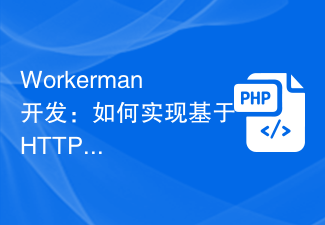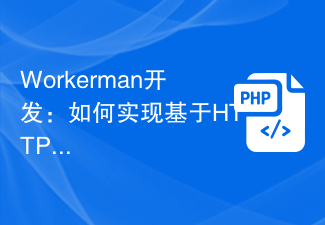Serial Connection
HTTP/0.9 and the early HTTP/1.0 protocol serialize HTTP request processing. Suppose a page contains 3 style files, all belonging to the same protocol, domain name, and port. Then, the browser needs to initiate a total of four requests, and can only open one TCP channel each time. After a requested resource is downloaded, the connection is immediately disconnected, and a new connection is opened to process the next request in the queue. As the size and number of page resources continue to expand, network latency will continue to accumulate. Users will face a blank screen and lose patience after waiting for too long.

Parallel connection
In order to improve the throughput of the network, the improved HTTP protocol allows the client to open multiple TCP connections at the same time , request multiple resources in parallel and make full use of bandwidth. Usually, there will be a certain delay between each connection, but the transmission time of the requests overlaps, and the overall delay is much lower than that of the serial connection. Considering that each connection consumes system resources and the server needs to handle a large number of concurrent user requests, the browser will set certain limits on the number of concurrent requests. Even though the RFC does not specify a specific limit, each browser manufacturer will have its own standards:
IE 7: 2
IE 8/9: 6
IE 10: 8
IE 11: 13
Firefox: 6
Chrome: 6
Safari: 6
Opera: 6
iOS WebView: 6
Android WebView: 6

Persistent connection (long connection)
The early HTTP protocol occupied an independent TCP connection for each request, which undoubtedly increased the TCP connection establishment overhead. , congestion control overhead, release connection overhead, improved HTTP/1.0 and HTTP/1.1 (default) both support persistent connections. If a request is completed, the connection will not be disconnected immediately, but the connection will be maintained for a certain period of time to quickly process upcoming HTTP requests and reuse the same TCP channel until the client heartbeat detection fails or the server connection times out. This feature can be activated through the HTTP header Connection: keep-alive. The client can also send Connection: close to actively close the connection. Therefore, we see that the two optimizations of parallel connections and persistent connections complement each other. Parallel connections allow the first loading page to open multiple TCP connections at the same time, while persistent connections ensure that subsequent requests reuse the opened TCP connections. This It is also a common mechanism for modern Web pages.

Pipelined connection
Persistent connections allow us to reuse the connection to complete multiple requests, but it must satisfy The queue order of FIFO must ensure that the previous request successfully reaches the server, is processed successfully, and the first byte returned by the server is received before the next request in the queue can be initiated. HTTP pipes allow clients to initiate multiple requests in succession within the same TCP channel without having to wait for a response, eliminating round-trip latency differences. However, in reality, due to the limitations of the HTTP/1.x protocol, data is not allowed to arrive interleaved on a link (IO multiplexing). Imagine a situation where the client and server send an HTML and multiple CSS requests at the same time. The server processes all requests in parallel. When all CSS requests are processed and added to the buffer queue, it is found that the HTML request processing encounters a problem and is hung indefinitely. In serious cases, it may even cause buffer overflow. This situation is called head-of-line blocking. Therefore, this solution has not been adopted in the HTTP/1.x protocol.
 Head-of-line blocking is not a unique concept in HTTP, but a common phenomenon in cached communication network exchanges
Head-of-line blocking is not a unique concept in HTTP, but a common phenomenon in cached communication network exchanges
Summary
1. For the same protocol, domain name, and port, the browser allows multiple TCP connections to be opened at the same time, and the general upper limit is 6.
2. The same TCP connection is allowed to initiate multiple HTTP requests, but you must wait for the first byte response of the previous request to reach the client.
3. Due to the queue head blocking problem, the client is not allowed to send all requests in the queue at the same time. This problem has been solved in HTTP/2.0.
The above is the detailed content of Concurrency limit and head-of-line blocking problem in HTTP protocol. For more information, please follow other related articles on the PHP Chinese website!
 PHP入门指南:HTTP协议May 22, 2023 am 08:06 AM
PHP入门指南:HTTP协议May 22, 2023 am 08:06 AMPHP是一种在互联网应用广泛的编程语言,而HTTP协议是支撑互联网的重要协议。对于初学者而言,学习HTTP协议是入门PHP编程的重要一步。本文将从HTTP协议的基本概念、请求方法、状态码和实际应用等方面介绍HTTP协议的具体内容,以帮助初学者更好地理解和掌握HTTP协议,从而更有效地开发PHP应用程序。HTTP协议的基本概念HTTP协议是HyperText
 深入探讨HTTP协议状态码的重要性Feb 25, 2024 pm 11:06 PM
深入探讨HTTP协议状态码的重要性Feb 25, 2024 pm 11:06 PM深入解读HTTP协议状态码:为什么状态码对于网站开发至关重要随着互联网的迅速发展,网站开发变得越来越重要。在网站开发中,HTTP协议扮演着至关重要的角色。它定义了浏览器和服务器之间的通信规范,通过请求和响应来传输数据。而HTTP状态码就是在这个过程中的一部分,用来表示请求的处理情况。本文将深入解读HTTP协议状态码的作用和意义。HTTP状态码是一个三位数的数
 作用解析:HTTP协议消息头Feb 25, 2024 am 11:06 AM
作用解析:HTTP协议消息头Feb 25, 2024 am 11:06 AMHTTP协议是现代互联网中最为常用的应用层协议之一,它基于客户端-服务器模型,用于在客户端和服务器之间传输数据。HTTP协议通过请求和响应的方式来进行通信,而消息头是HTTP协议中非常重要的一部分,它用于在请求和响应中传递元数据。本文将探讨HTTP协议消息头的作用。首先,HTTP协议消息头可以用来传递请求的相关信息。在客户端向服务器发送请求时,消息头中的字段
 详细解读Nginx反向代理服务器的HTTP协议支持和性能优化Aug 04, 2023 pm 01:20 PM
详细解读Nginx反向代理服务器的HTTP协议支持和性能优化Aug 04, 2023 pm 01:20 PMNginx反向代理服务器是一种功能强大的Web服务器,它不仅可以处理HTTP请求和响应,还能提供HTTP协议支持和性能优化。在本文中,我们将详细解读Nginx反向代理服务器的HTTP协议支持和性能优化,并提供一些代码示例。一、HTTP协议支持请求处理Nginx反向代理服务器可以接收来自客户端的HTTP请求,并将其转发给后端服务器。对于每个请求,Nginx会进
 Workerman开发:如何实现基于HTTP协议的批量文件处理系统Nov 07, 2023 pm 12:16 PM
Workerman开发:如何实现基于HTTP协议的批量文件处理系统Nov 07, 2023 pm 12:16 PMWorkerman开发:如何实现基于HTTP协议的批量文件处理系统,需要具体代码示例随着互联网和数字化技术的发展,数据处理变得越来越重要,尤其在企业中。有时候,我们需要处理大量的文件,例如图片、视频、音频等等。这时候,如果手工操作,不仅费时费力,而且易出错。如何实现批量文件处理系统就是本文要探讨的话题。Workerman是一个PHP开发的高性能的socket
 Workerman开发:如何实现基于HTTP协议的Web服务器Nov 07, 2023 am 10:51 AM
Workerman开发:如何实现基于HTTP协议的Web服务器Nov 07, 2023 am 10:51 AMWorkerman开发:如何实现基于HTTP协议的Web服务器,需要具体代码示例引言:随着互联网的快速发展,Web开发变得越来越重要。而提供Web服务的基础就是Web服务器。Workerman是一款高性能的PHP开发框架,不仅可以用于开发网络通信服务器,还可以实现基于HTTP协议的Web服务器。本文将介绍利用Workerman开发一个简单的HTTPWeb服
 PHP中的HTTP协议和状态码May 11, 2023 pm 04:28 PM
PHP中的HTTP协议和状态码May 11, 2023 pm 04:28 PMPHP是一种广泛使用的服务器端脚本语言,用来构建Web应用程序。在Web应用程序中,HTTP协议和状态码是必需的基础知识,在本文中我们将探讨PHP中HTTP协议和状态码的基础知识。HTTP协议是一个用于传输超文本的协议,在Web开发中被广泛使用。通过HTTP协议,Web浏览器和Web服务器之间通过互联网进行交互,Web浏览器向Web服务器发送HTTP请求,W
 403状态码分析:应对HTTP错误中的禁止访问情况Feb 18, 2024 pm 05:44 PM
403状态码分析:应对HTTP错误中的禁止访问情况Feb 18, 2024 pm 05:44 PM403状态码解析:如何应对HTTP协议中的禁止访问错误引言:在网络世界中,当我们浏览网页或发送请求时,常常会遇到各种各样的错误。其中之一就是403状态码,表示禁止访问错误。本文将对403错误进行解析,并提供一些应对策略,帮助读者更好地处理这类问题。一、403状态码的含义和原因403状态码是HTTP协议中的一个客户端错误状态码,它表示服务器理解客户端的请求,但


Hot AI Tools

Undresser.AI Undress
AI-powered app for creating realistic nude photos

AI Clothes Remover
Online AI tool for removing clothes from photos.

Undress AI Tool
Undress images for free

Clothoff.io
AI clothes remover

AI Hentai Generator
Generate AI Hentai for free.

Hot Article

Hot Tools

SublimeText3 Mac version
God-level code editing software (SublimeText3)

SAP NetWeaver Server Adapter for Eclipse
Integrate Eclipse with SAP NetWeaver application server.

Atom editor mac version download
The most popular open source editor

mPDF
mPDF is a PHP library that can generate PDF files from UTF-8 encoded HTML. The original author, Ian Back, wrote mPDF to output PDF files "on the fly" from his website and handle different languages. It is slower than original scripts like HTML2FPDF and produces larger files when using Unicode fonts, but supports CSS styles etc. and has a lot of enhancements. Supports almost all languages, including RTL (Arabic and Hebrew) and CJK (Chinese, Japanese and Korean). Supports nested block-level elements (such as P, DIV),

SecLists
SecLists is the ultimate security tester's companion. It is a collection of various types of lists that are frequently used during security assessments, all in one place. SecLists helps make security testing more efficient and productive by conveniently providing all the lists a security tester might need. List types include usernames, passwords, URLs, fuzzing payloads, sensitive data patterns, web shells, and more. The tester can simply pull this repository onto a new test machine and he will have access to every type of list he needs.






